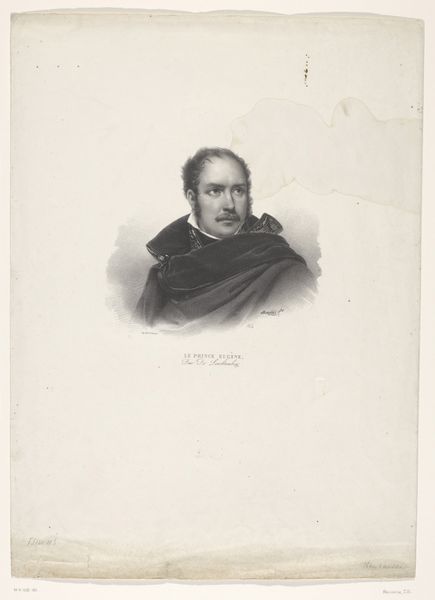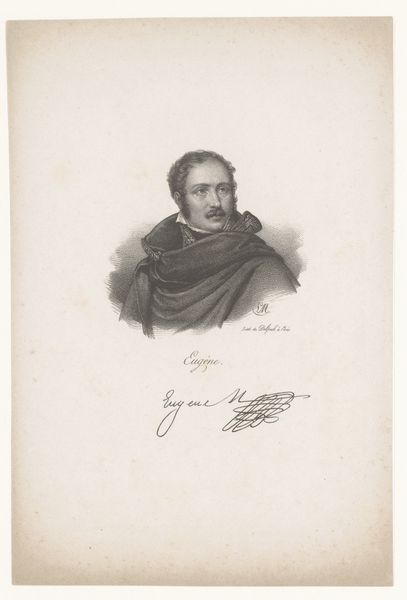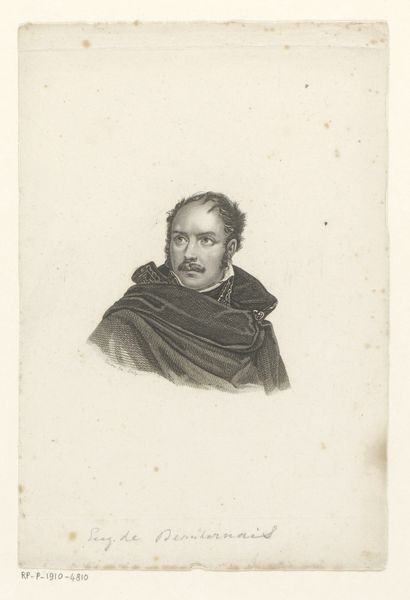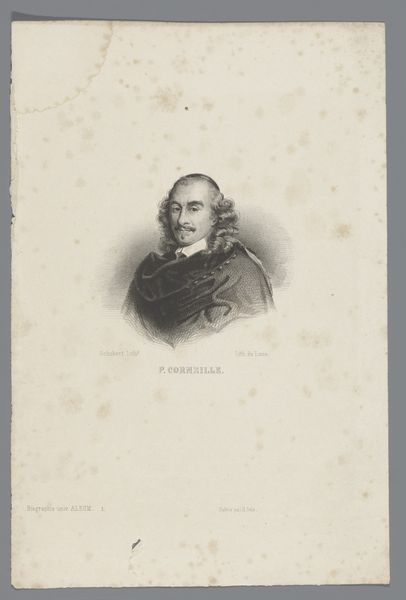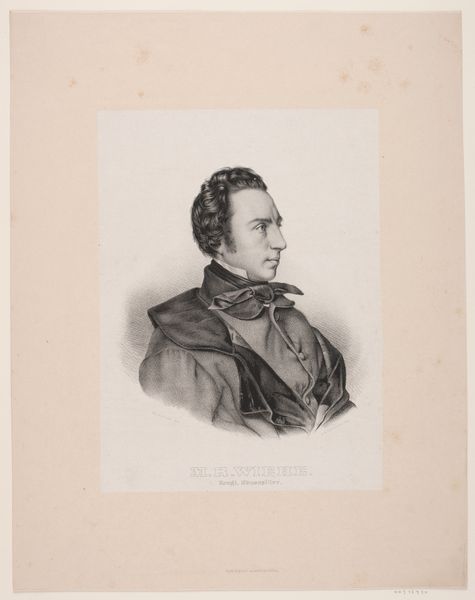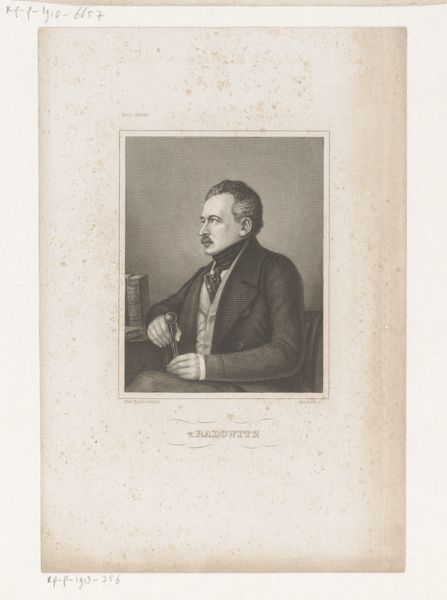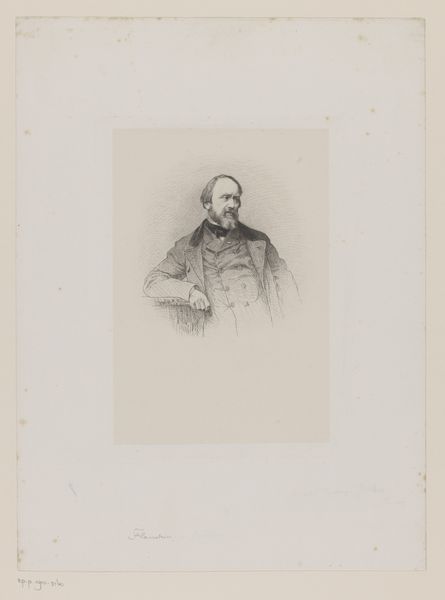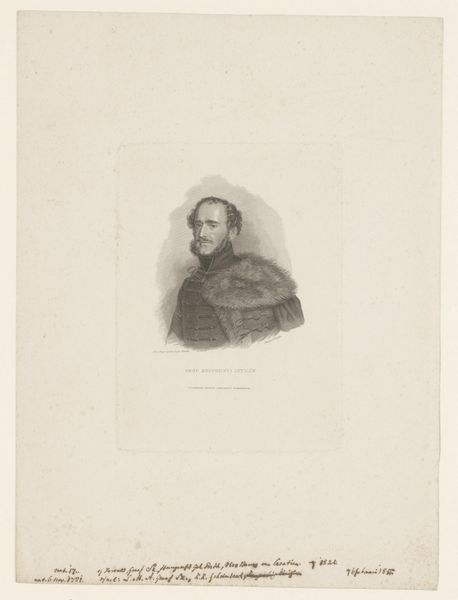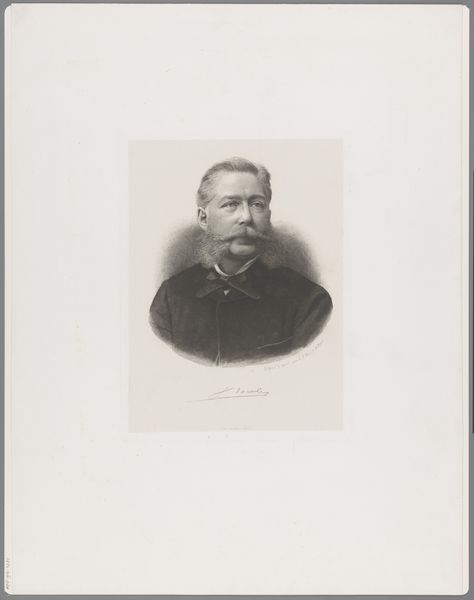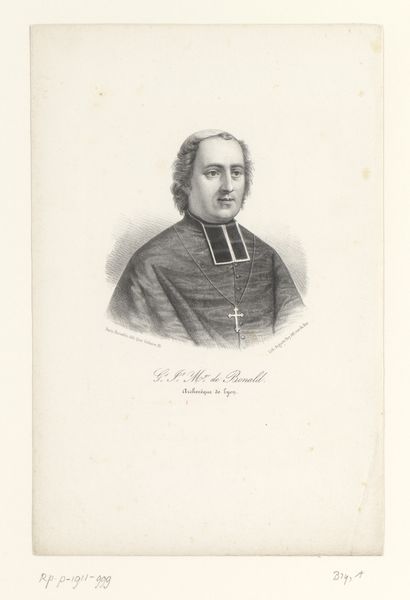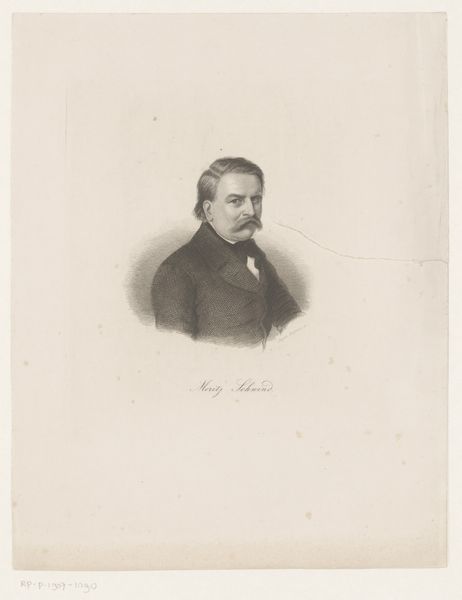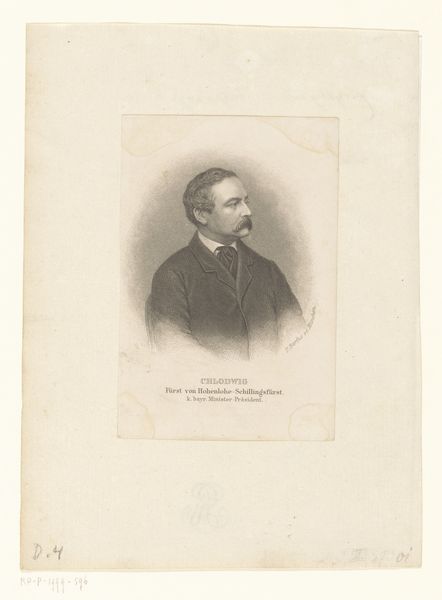
print, engraving
portrait
pencil drawn
neoclacissism
pencil sketch
pencil drawing
history-painting
engraving
Dimensions: height 179 mm, width 127 mm
Copyright: Rijks Museum: Open Domain
Curator: This is a portrait of Eugène de Beauharnais, dating from sometime between 1808 and 1868. It’s currently held in the collection of the Rijksmuseum. Editor: There’s something instantly noble about this figure, isn't there? Even rendered simply in black and white, the meticulous linework suggests an inherent dignity. Curator: Indeed. The work is attributed to Carl Mayer. We know it's an engraving, which as a medium had a crucial role to play in image dissemination, particularly of those in positions of power. Reproducing and circulating images like this served specific functions. Editor: It definitely lends itself to wider consumption; however, there is something also incredibly personal and intimate about the gaze. Note the delicate shadowing around the eyes. He is both a man and a symbol here. What symbols or deeper meanings are at play in your interpretation of the art? Curator: Given that Eugène de Beauharnais was Napoleon’s stepson and a significant military figure, this portrait can be interpreted through the lens of power and propaganda. Prints like these functioned as a sort of branding for political figures, shaping public perception of legitimacy and strength. The engraver, through skillful rendering, had a public duty to make sure the artwork conformed to specific societal expectations. Editor: I see his cape now as a garment that covers his armor. Even with a shallow depth of field in this print, the cape draped over his shoulder reminds me of that power you are talking about. So, considering those classical elements, it seems the symbolism also relies on established conventions of visual authority, reinforcing societal hierarchies. Curator: Exactly. Consider the time in which it was produced and its place in solidifying political standing. Understanding the forces that dictated art's creation enhances our grasp on social order during that period. Editor: Yes, seeing the visual and cultural context, I feel a stronger connection to the sitter now. Thanks for the journey back in time! Curator: Likewise! Thinking about the social life of imagery, what images say, and to whom, makes the portrait much more relevant.
Comments
No comments
Be the first to comment and join the conversation on the ultimate creative platform.
